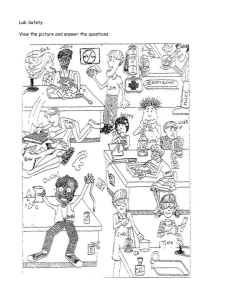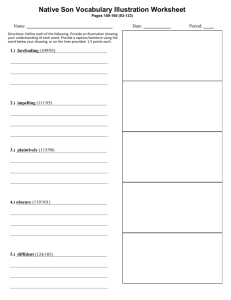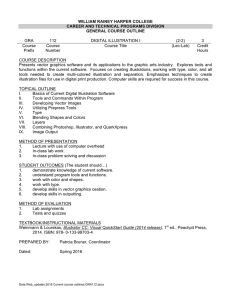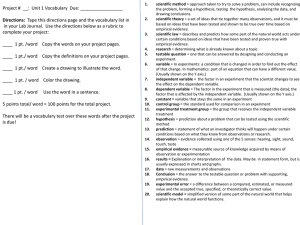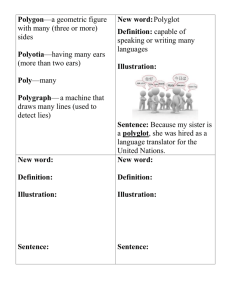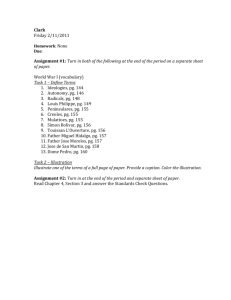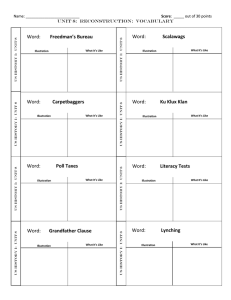AH Unit 1 Review Vocab_3
advertisement
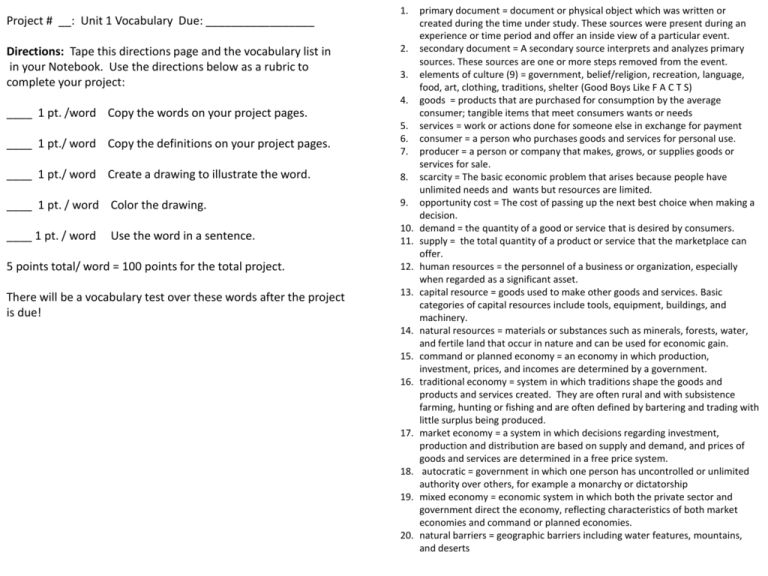
Project # __: Unit 1 Vocabulary Due: _________________ Directions: Tape this directions page and the vocabulary list in in your Notebook. Use the directions below as a rubric to complete your project: 1. 2. 3. 4. ____ 1 pt. /word Copy the words on your project pages. ____ 1 pt./ word Copy the definitions on your project pages. 5. 6. 7. ____ 1 pt./ word Create a drawing to illustrate the word. 8. ____ 1 pt. / word Color the drawing. 9. ____ 1 pt. / word 10. 11. Use the word in a sentence. 5 points total/ word = 100 points for the total project. 12. There will be a vocabulary test over these words after the project is due! 13. 14. 15. 16. 17. 18. 19. 20. primary document = document or physical object which was written or created during the time under study. These sources were present during an experience or time period and offer an inside view of a particular event. secondary document = A secondary source interprets and analyzes primary sources. These sources are one or more steps removed from the event. elements of culture (9) = government, belief/religion, recreation, language, food, art, clothing, traditions, shelter (Good Boys Like F A C T S) goods = products that are purchased for consumption by the average consumer; tangible items that meet consumers wants or needs services = work or actions done for someone else in exchange for payment consumer = a person who purchases goods and services for personal use. producer = a person or company that makes, grows, or supplies goods or services for sale. scarcity = The basic economic problem that arises because people have unlimited needs and wants but resources are limited. opportunity cost = The cost of passing up the next best choice when making a decision. demand = the quantity of a good or service that is desired by consumers. supply = the total quantity of a product or service that the marketplace can offer. human resources = the personnel of a business or organization, especially when regarded as a significant asset. capital resource = goods used to make other goods and services. Basic categories of capital resources include tools, equipment, buildings, and machinery. natural resources = materials or substances such as minerals, forests, water, and fertile land that occur in nature and can be used for economic gain. command or planned economy = an economy in which production, investment, prices, and incomes are determined by a government. traditional economy = system in which traditions shape the goods and products and services created. They are often rural and with subsistence farming, hunting or fishing and are often defined by bartering and trading with little surplus being produced. market economy = a system in which decisions regarding investment, production and distribution are based on supply and demand, and prices of goods and services are determined in a free price system. autocratic = government in which one person has uncontrolled or unlimited authority over others, for example a monarchy or dictatorship mixed economy = economic system in which both the private sector and government direct the economy, reflecting characteristics of both market economies and command or planned economies. natural barriers = geographic barriers including water features, mountains, and deserts Project # ___: ___ Unit ___ Vocab. Name __________________________ Word = Definition 1. 2. 3. 4. 5. Illustration Core 1 2 3 Score ____/ 100 Word used in a sentence. Word = Definition 6. 7. 8. 9. 10. Illustration Word used in a sentence. Word = Definition 11. 12. 13. 14. 15. Illustration Word used in a sentence. Word = Definition 16. 17. 18. 19. 20. Illustration Word used in a sentence.

